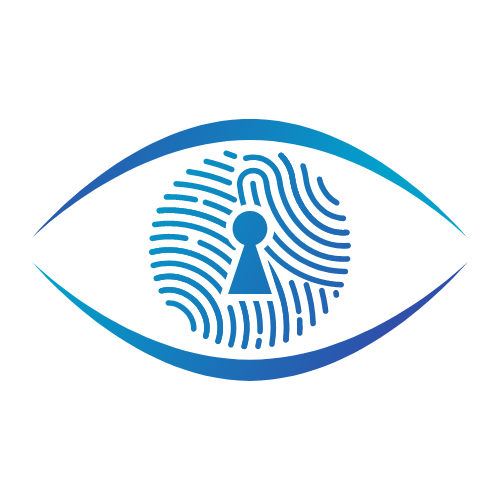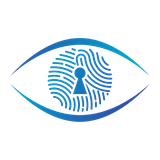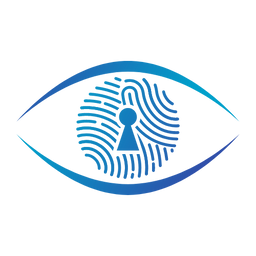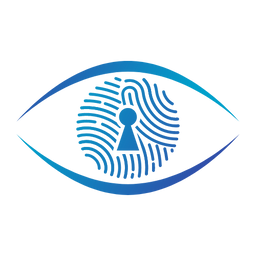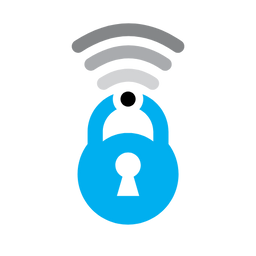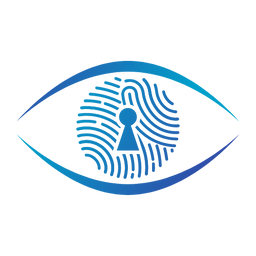The Hidden Costs of Connection: Understanding IoB Privacy Risks

The "Internet of Bodies" (IoB) is rapidly transforming our world, connecting digital devices directly to the human body to monitor health metrics and personal information, which is then transmitted over the internet. While these advancements promise revolutionary benefits in healthcare and daily life, they also introduce significant and often unseen privacy risks. As IoB devices become more ubiquitous – from smartwatches and fitness trackers to ingestible sensors and implanted medical devices – understanding these privacy implications is crucial.
The Intimacy of IoB Data Collection
IoB devices delve deep into the most personal aspects of our lives and bodies. They can track, record, and store sensitive information including our whereabouts, bodily functions, what we see, hear, and even what we think. This includes a vast range of physiological data, such as blood pressure, heart rate, body temperature, electrocardiogram (ECG), electroencephalogram (EEG), blood glucose, and sleep patterns. Beyond the physical, IoB also collects behavioral data like activity levels, social interactions, purchasing habits, and online clicks, building a rich digital footprint. Some future devices, like augmented-reality contact lenses or intraocular lenses with cameras, could record everything a user sees, while brain-computer interfaces (BCIs) aim to read thoughts or control prosthetic limbs. This intimate level of data collection raises fundamental questions about who has the authority to access and use this information.

The Challenge of Consent and Data Ownership
One of the most profound privacy risks is the bypassing of informed consent. Users are frequently unaware of precisely what data is being collected, how often it's gathered, or where it's ultimately going. This lack of transparency makes it nearly impossible for individuals to provide meaningful consent for each use of their data. Adding to this complexity, there's no clear consensus on who owns the data generated by an IoB device – is it the user, the manufacturer, or the healthcare provider?
Misuse and Third-Party Exploitation
The collected IoB data is a valuable asset, making it ripe for misuse. If breached, this sensitive information can be exploited for identity theft, insurance fraud, or unauthorized access to medical records. A significant concern is the role of data brokers—companies that have no direct relationship with consumers but acquire and sell their personal information, potentially building incredibly detailed profiles without the individual's knowledge or consent.
Data collected for one purpose might also be repurposed or combined with other datasets to infer unintended information, a phenomenon known as "scope creep". This could include inferring cognitive ability, addiction propensity, or even emotional states, leading to the commercial exploitation and commodification of personal identity and health status. These aggregated data points can form "identity shadows" or "data doubles" that, once created, can influence how individuals are perceived and treated, potentially affecting insurance premiums, loan approvals, or employment opportunities.
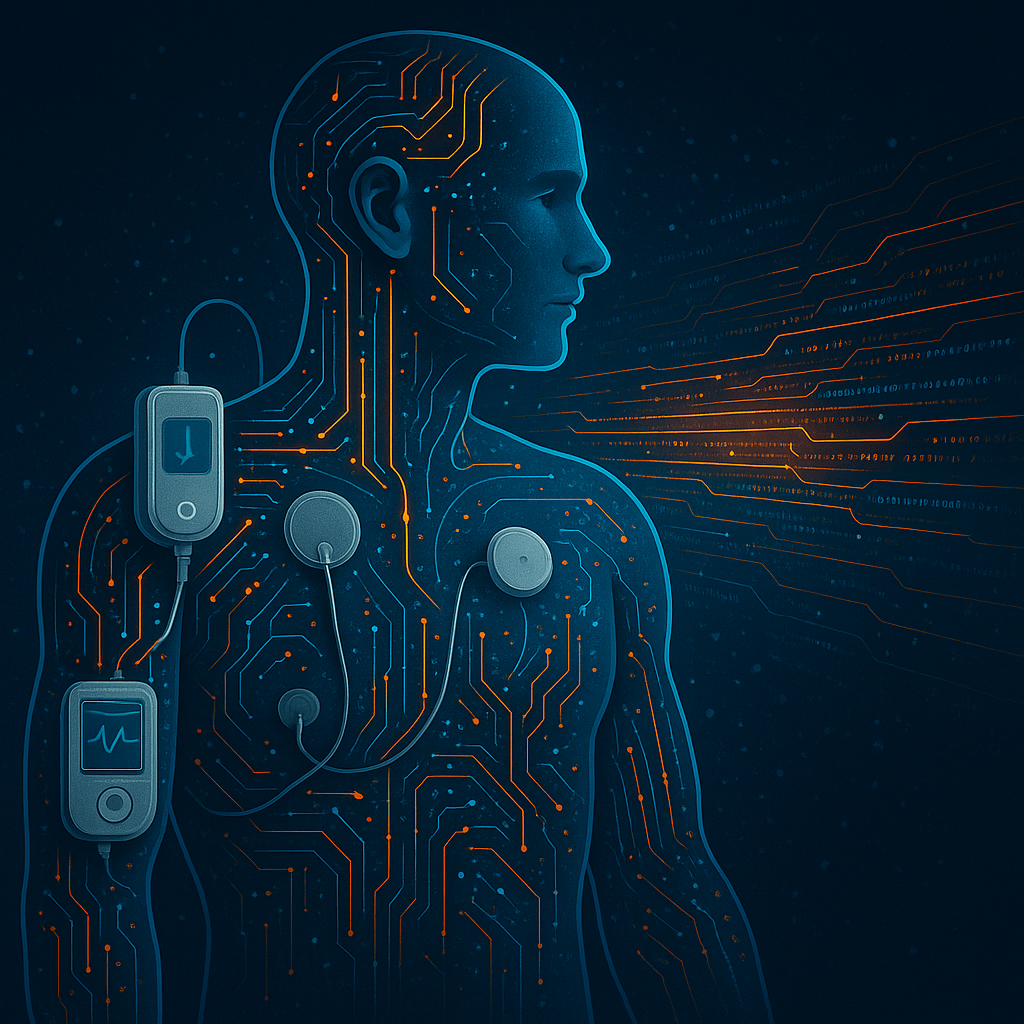
Specific Scenarios Where Privacy Is at Risk:
- Insurance Companies: IoB devices tracking adherence to medication (e.g., digital pills) or lifestyle habits (e.g., CPAP machine usage, health trackers) could send this data to insurance companies, potentially leading to denial of coverage or higher premiums for non-compliance or "unhealthy" behaviors.
- Employers: Technologies like smart wristbands can track employee behavior, movements, and productivity, raising concerns about intrusiveness and violations of employee privacy.
- Law Enforcement/Criminal Justice: IoB data, such as pacemaker information or location data from fitness trackers, has already been used by law enforcement in criminal investigations, raising questions about constitutional protections against self-incrimination and unreasonable search and seizure. Data fusion centers can aggregate health data, giving law enforcement extensive knowledge about individuals.
- Surveillance States: The widespread adoption of IoB could enable or strengthen surveillance states that use biometric data to enforce authoritarian regimes or social control, similar to social credit scoring systems.
- Privacy of Others: Devices that record audio or video, such as augmented reality glasses or smart hearing implants, raise concerns about the privacy of individuals who are seen or heard by the device but have not consented to such collection.
Regulatory Gaps and Broader Ethical Concerns
The regulatory landscape for IoB devices is often described as a "Wild West," characterized by a patchwork of legislation and significant gaps. In many regions, including the United States, there is no comprehensive federal data privacy law, and much of the data collected by consumer IoB devices falls outside the purview of existing laws like HIPAA. This regulatory void creates uncertainty regarding consumer safety and data sharing practices.
Beyond data, IoB presents deeper ethical challenges:
- Erosion of Autonomy: Constant algorithmic nudging and decision-making by IoB systems can undermine human autonomy and free will, subtly shaping choices and potentially leading to a decline in an individual's own decision-making capacity.
- Psychological Impact: Continuous monitoring can lead to increased anxiety and stress, with some studies showing that constant sleep tracking can even worsen conditions like insomnia.
- Inequity: Without universal access or affordability, the benefits of IoB might exacerbate existing health disparities, creating a "digital divide" where some groups miss out on advanced care or public health initiatives.

Securing Our Connected Bodies
The Internet of Bodies (IoB) refers to technologies that connect humans to the internet, monitoring physiological, biometric, and behavioral data, and sometimes altering bodily functions. These devices, ranging from smartwatches to medical implants, collect vast quantities of highly personal and sensitive information. While IoB offers significant benefits, such as improved patient monitoring, personalized treatment, early disease detection, and cost savings, its implementation introduces substantial cybersecurity and data privacy challenges.

The privacy risks associated with the Internet of Bodies are profound and complex. To navigate this evolving landscape, there is an urgent need for robust security protocols, clear data ownership policies, and comprehensive regulatory frameworks that prioritize individual privacy and autonomy. It requires a coordinated effort from manufacturers, healthcare providers, policymakers, and individuals to ensure that the transformative potential of IoB is realized without compromising fundamental human rights and dignity.

IoB devices, or Internet of Bodies devices, are categorized primarily by their level of integration with the human body. These devices monitor the human body, collect health metrics and other personal information, and transmit that data over the internet.
Current Regulatory Frameworks and Industry Practices Addressing IoB Device Security and Data Privacy:
1. Cybersecurity Risks and Mitigation: IoB devices are susceptible to various cybersecurity threats, including hacking, data manipulation, denial-of-service (DoS) attacks, and data theft, which can have dire consequences, including physical harm or death. Vulnerabilities often stem from weak authentication, unpatched systems, and a lack of security-by-design principles.
- FDA Oversight and Guidelines (U.S.):
- The U.S. Food and Drug Administration (FDA) is the primary entity responsible for the safety of medical devices that fall under its purview.
- Since 2013, the FDA has held public workshops and issued pre- and post-market guidance documents to help manufacturers identify and mitigate cybersecurity threats and vulnerabilities. These documents provide non-binding guidance on meeting patient safety regulations.
- The FDA also posts advisory notices about known vulnerabilities in critical medical devices and maintains an email distribution list for alerts.
- The PATCH Act of 2022, a proposed legislation, would require manufacturers to implement measures like patching devices throughout their lifecycle and including a software bill of materials (SBOM) for new devices, making it easier to monitor vulnerabilities.
- The FDA works with organizations like the MITRE Corporation to develop a scoring system for medical device software vulnerabilities that accounts for potential safety and health impacts.
- In 2019, the FDA issued a historic recall of certain Medtronic MiniMed insulin pumps due to cybersecurity risks, marking the first time a connected diabetes device was recalled for such vulnerabilities. This highlighted the risk of hackers wirelessly changing pump settings to cause insulin overdose or stoppage.
- Despite these efforts, many consumer IoB devices do not fall under FDA jurisdiction.
- Other U.S. Federal and State Efforts:
- The National Institute of Standards and Technology (NIST) influences cybersecurity for civilian and governmental systems, including IoT and cyber-physical systems, by developing best practices and guidelines.
- Some states have enacted IoT security laws, such as California's SB-327 (effective January 2020), which requires connected devices to have "reasonable security features" and prohibits generic default passwords.
- The Internet of Things Cybersecurity Improvement Act of 2019 aims to improve security by documenting best practices for IoT device development, management, and patching, and recommends federal agencies apply these practices.
- Industry Practices for Security:
- Secure-by-Design: Manufacturers are encouraged to integrate cybersecurity and privacy considerations from the beginning of product development.
- Encryption and Authentication: Implementing stringent encryption protocols and strong authentication methods (e.g., multi-factor authentication) is essential for protecting data in transit and at rest. Homomorphic encryption is also explored as a method for secure data transfer between users and cloud computing, allowing computation on encrypted data.
- Regular Updates and Patching: Routine software updates and thorough security testing are critical. However, patching implanted devices that require 24/7 availability or are difficult to access remotely remains a challenge.
- Vulnerability Disclosure Programs: Public-private partnerships and grassroots advocates encourage researchers to disclose medical device vulnerabilities without fear of civil or criminal liability.
- Standards and Frameworks: Adherence to specific cybersecurity standards, like the DTSec Cybersecurity standard for diabetes devices, is recommended. Frameworks such as Digi TrustFence® provide built-in secure features for devices, including secure boot, encrypted storage, and secure updates.
- Healthcare Provider Responsibilities: Healthcare organizations need to conduct routine security assessments of IoB devices, train staff in cybersecurity best practices, and develop incident response plans that include ransomware contingencies and offline procedures.
- Patient Contribution: Patients are encouraged to use strong, unique passwords and keep their IoB devices updated.
2. Data Privacy Risks and Regulations: IoB devices collect highly sensitive personal data, including location, bodily functions, and even thoughts, raising significant privacy and confidentiality concerns. Unresolved questions exist regarding data ownership, access authority, and the sale of data to third parties.
- Regulatory Landscape (U.S.):
- HIPAA (Health Insurance Portability and Accountability Act): Provides the main framework for protecting medical information at the federal level, requiring covered entities to notify individuals of improper access or disclosure of personal health information. However, HIPAA does not cover non-medical health or biometric information collected by most consumer IoB devices.
- FTC's Role: Enforces data security and consumer privacy through actions against companies engaging in "unfair or deceptive acts or practices," including misleading data use. The FTC also developed a Mobile Health Apps Interactive Tool to guide developers on applicable laws.
- State-level Laws: The U.S. has a "patchwork of laws" regarding personal data privacy, with variations in types of information protected and recourse available. Many states have laws requiring notification of data breaches, and some explicitly cover non-medical biometric information.
- CCPA (California Consumer Privacy Act): Gives individuals rights to know what data is collected, its purpose, who it's shared with, and the right to opt-out of data sales and request deletion. It broadly defines personal data to include biometric information, geolocation, and inferences used for psychological profiles.
- Regulatory Landscape (International):
- GDPR (General Data Protection Regulation) in Europe: Requires informed consent for data collection, mandates protection commensurate with risk, and gives citizens rights to access, delete, or transmit their data. GDPR is designed to protect EU residents from data breaches and cyber-attacks.
- Chile's "Neurorights": Chile has moved to amend its constitution to protect "neurorights," treating personal brain data and mental integrity with the same status as bodily organs, preventing their sale or manipulation without consent.
- Industry and Ethical Practices for Privacy:
- Informed Consent and Transparency: Ethical implementation of IoB in healthcare requires stringent security measures, informed consent procedures, and robust data protection strategies. Users should be fully aware of what data is collected, how often, for what purpose, and whether it can be sold or shared. However, achieving meaningful informed consent is challenging given the continuous and often hidden data collection.
- Data Anonymization and Minimization: Designing systems with privacy in mind includes using data anonymization tools and collecting only necessary data.
- Controlling Data Usage: Patients need control over their data usage, including the ability to opt-out of data collection or forbid companies from selling their data.
- Ethical AI Frameworks: These frameworks emphasize clear consent, limited data collection, avoidance of manipulation, fairness, bias reduction, accountability, and oversight to ensure a trustworthy IoB ecosystem.
- Addressing Data Brokerage: There is a call for policies to regulate data brokers, as much IoB data is bought and sold without consumer knowledge.
Challenges and Gaps in Current Approaches:
- Fragmented Regulation: The U.S. lacks a comprehensive federal data privacy law, resulting in a patchwork of state-level regulations that vary significantly, creating regulatory gaps and enforcement challenges.
- Limited Scope of Existing Laws: HIPAA does not cover most consumer health devices, and many IoB devices fall outside of FDA jurisdiction.
- Balancing Security and Usability: Implementing strong security measures like multi-factor authentication can hinder ease of use, which is critical for devices like insulin pumps, posing a trade-off between security and usability.
- Legacy Devices: Many hospitals use older medical equipment that may no longer receive security patches and updates, increasing vulnerabilities.
- Data Ownership and Commodification: There are no clear legal norms on who owns data generated by IoB devices (user, manufacturer, or healthcare provider), leading to potential commodification of personal identity and increased inequality.
- Behavioral Manipulation and "Digital Determinism": IoB platforms' ability to predict and influence behavior raises concerns about eroding autonomy, subtle nudging, and "simulation dominance" where algorithmic profiles might overrule an individual's actual reality.
- Uncertainty and Model Bias: Digital twin models, central to IoB analysis, involve uncertainty from observation, model structure, and parameters, and may exhibit bias if not trained on diverse data sets.

To maximize benefits while mitigating risks, IoB needs a human-centric approach, emphasizing ethical design principles, robust legal frameworks, transparency, and continuous societal dialogue.
There are three main categories or "generations" of IoB devices:
- Body-external (First Generation): These are wearable devices that are connected to the body externally and use sensors to track various metrics.
- Examples include:
- Smartwatches (e.g., Apple Watches, Fitbits) that monitor heart rate, steps, and activity levels.
- Smart glasses that function as cameras, headphones, and monitors.
- Fitness trackers.
- Wearable UV monitors.
- Electronic tattoos.
- Meditation headsets.
- Bluetooth-connected hearing aids.
- Temperature bracelets.
- Clothing with temperature monitoring.
- Attention monitors (glasses tracking brain activity and eye movements).
- Smartphone with health apps, which becomes an IoB device when connected to the body to track user information like heart rate or steps.
- Examples include:
- Body-internal (Second Generation): These devices are ingested or implanted inside the body.
- Examples include:
- Pacemakers with digital implants that transmit heart activity data to healthcare providers.
- Digital pills that transmit medical data after being ingested.
- Microchip implants.
- Artificial pancreas systems that integrate continuous glucose monitors (CGM) and insulin pump technology with AI algorithms to automate insulin dosing. Some diabetics have even hacked obsolete insulin pumps for a DIY artificial pancreas.
- Implantable glucose monitors that measure blood glucose via a sensor under the skin and transmit readings to a receiver or smartphone app.
- Cochlear implants that restore hearing and can have wireless connectivity to smartphones for monitoring and setting adjustments.
- Brain-computer interfaces (BCIs), which can be implanted or non-invasive, use electrodes to connect brain signals to a computer, aiming to read thoughts or control prosthetic limbs.
- Tissue-integrated biosensors under development that may offer more precise bio-tracking and additional functionalities like remote control of other devices.
- Tooth-mounted RFID sensors under development to track glucose, salt, and alcohol consumption.
- Intraocular lenses with cameras that can record what the user sees.
- Examples include:
- Body-embedded/Melded (Third Generation): This category describes technology where the technology and the human body are melded together, having a real-time connection to a remote machine.
- Examples include:
- Smart prosthetics hardwired into patients' nerves and muscles. These prosthetics can have electronic sensors to detect muscle movements and may be internet-enabled to send feedback to manufacturers or track vital signs.
- Examples include:
Beyond these direct body connections, there are also freestanding consumer IoB devices, which are internet-connected furniture and appliances that track and provide feedback on a user's well-being at home. Examples include smart toilets that monitor urine and sugar levels and report results through an app, scales integrated with health apps, and beds with sensors for sleep tracking.
Overall, an IoB device is defined as a device that contains software or computing capabilities, can communicate with an internet-connected device or network, and either collects person-generated health or biometric data or can alter the human body's function.
